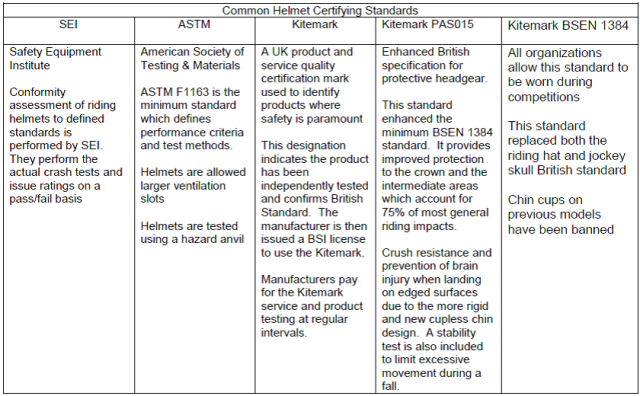When was the last time you hit the ground? Did you land on your head? How did your noggin fair? How long have you had that helmet? Is your helmet up to safety standards?
These are all questions to consider when shopping for a new helmet. Thanks to various organizations, new programs have been enacted to help take care of our heads. The science behind modern headgear has improved greatly over time, and various safety standards have been adopted to demonstrate the efficacy, testing and intent of each safety standard. I’m here to simplify and explain those standards to help you mind your melon.
Figuring out which helmet is appropriate is tricky with all those letters, certifications and options, not to mention the variations of standards required for competitions outside the USA.
Reading the safety standards included in helmet descriptions got me thinking that we need an easier way to translate the information in one place. I’m all about tables and snappy alliterations to help me remember stuff, so I happily share this quick reference guide to headgear safety standards, in a nutshell.
Of course, our friends at Charles Owen , GPA, IRH, Troxel, Ovation, various tack shops and online retailers are on deck to provide additional information and tips on proper fitting. Here’s some information to get you started.
Safety standards have been developed to indicate the levels and details of the testing and results and are an important factor when choosing a helmet. Although the most expensive helmet isn’t necessarily the safest, the cost of testing and credentials is reflected in the price.
Of course, it’s always a good idea to consult a trained professional to ensure proper fit. A helmet that doesn’t fit your head properly doesn’t protect your head as well as it could.
One quick tip to remember is that US helmets are rated using a pass/fail system. Those that “pass” are awarded the ASTM F1163 minimum rating. The test to award the minimum rating is conducted by the SEI.
Studies have shown that helmet technology today, even at minimum safety standards, offers a considerable amount of protection for your noggin. So if all else fails, chose the ASTM/SEI approved model that fits both your head and your budget.





















